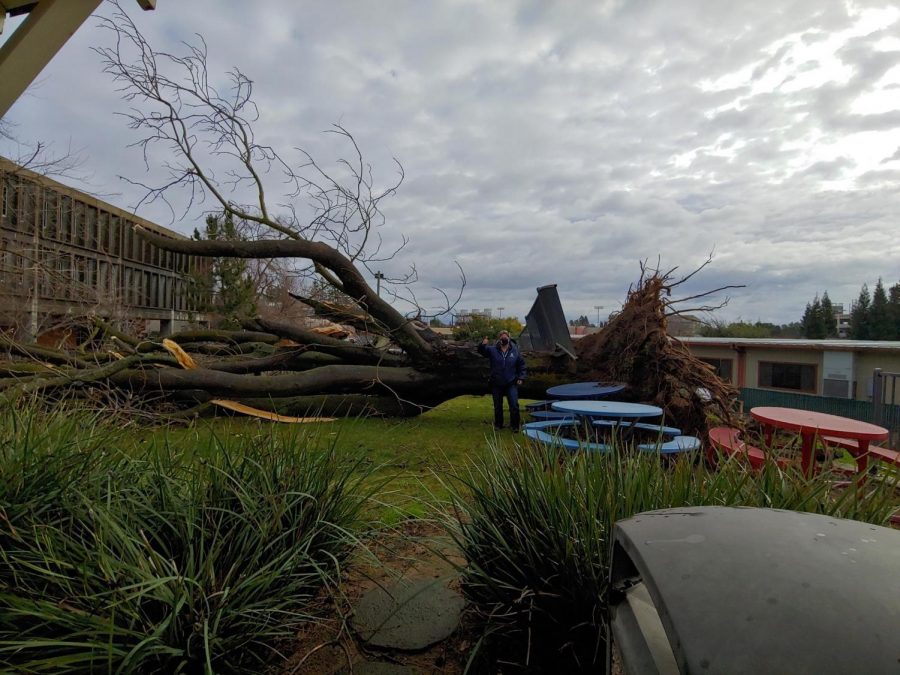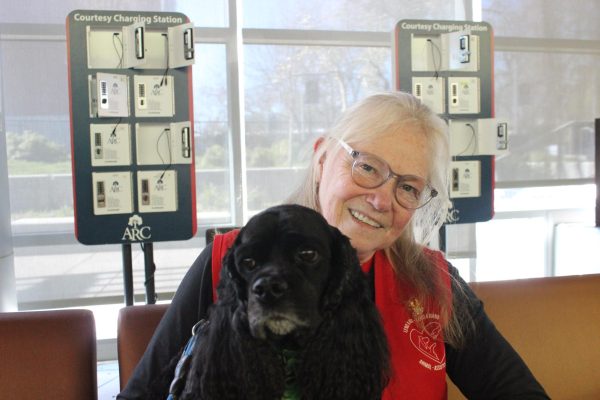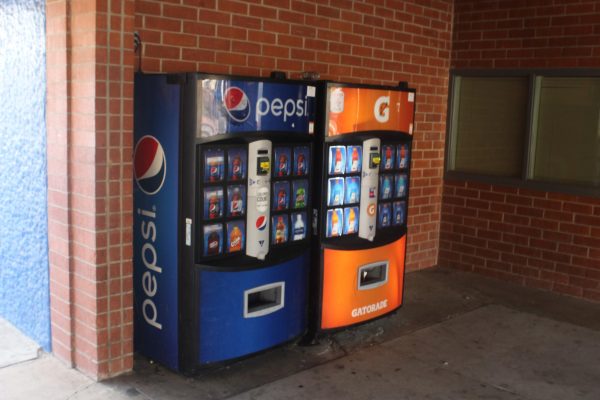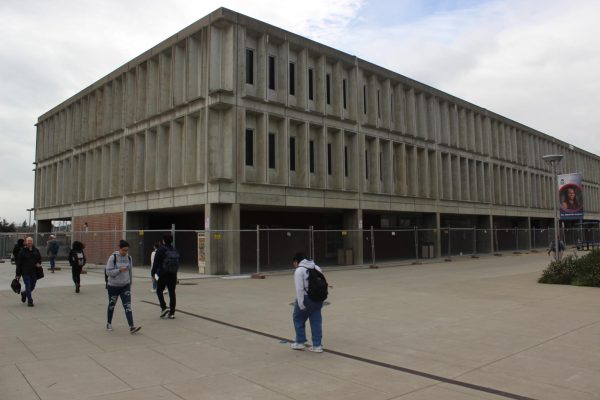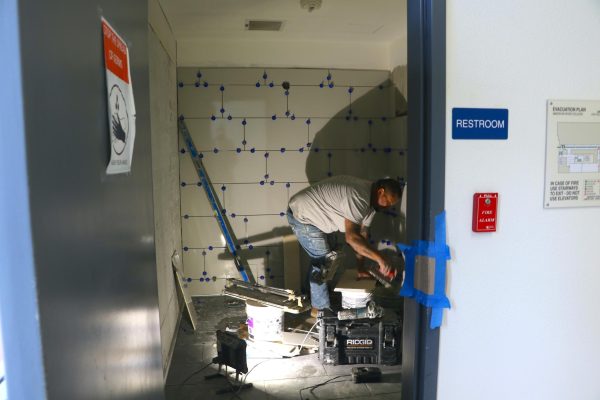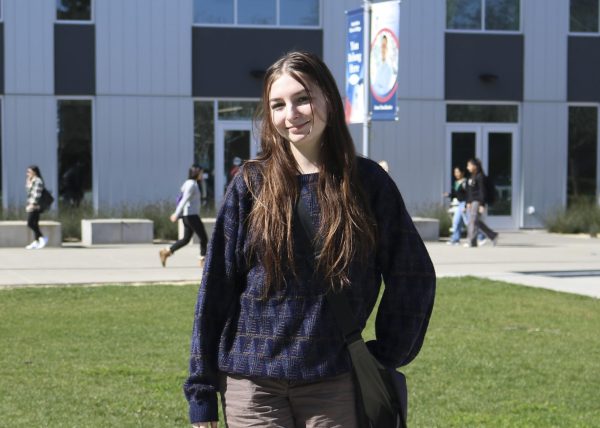ARC staff tames wild campus for student reintroduction
What happened when everyone left?
A storm knocked over a 60 year old tree, narrowly avoiding the Ranch House and the Portable Village. Director Cheryl Sears uses her body for scale after inspecting the damage. (Photo Courtesy of Cheryl Sears)
When American River College shut down the campus last year, many faculty and students thought they would be back after spring break. After the closure, Administrative Services director Cheryl Sears, along with a couple members of the operations team, were the only ones left working on campus. Then, with the buildings locked, the HVAC systems off, and the groundskeepers and maintenance staff at home, the campus grew a little wild.
According to Sears, within a few months of the campus closing, the grounds became weedy and overgrown, inviting the wildlife.
When faculty could come back onto campus to grab anything left behind, Sears began to hear reports of pests living inside of the classrooms.
“Even though we have regular pest service, rodents, spiders and other insects started showing up more than usual,” Sears said. “Not to mention the campus has become the home for deer, skunks, cats, a fox, many kildeer and a large rafter or flock of turkeys.”
ARC has since switched pest control companies. According to Sears, the number of pest reports declined significantly since the switch.
Sears has had a lot more to worry about then just pests. In February, a storm hit the campus hard. Winds blew over a 60-year-old tree in the Ranch House front yard, knocking out the fence behind it.
Luckily, according to Sears, it landed in the only place it could without causing major damage to the Ranch House or Portable Village.
Aside from the large tree, the campus lost a few smaller trees. The buildings also sustained minor roof damage, and a few of the classrooms leaked. There was a significant leak in the Learning Resource Center lobby, but the operations team quickly repaired it.
While the campus suffered a barrage of attacks from the outside, there was also an internal mess brewing. In the science labs, the chemicals began to expire.
According to laboratory supervisor Narine Madramootoo, chemicals are inventoried every semester and replaced as needed. However, with the chemicals sitting dormant for over a year, getting the labs ready for students is now a daunting task.
According to Madramootoo, when chemicals expire, it can become inactive, decompose to another form, or become contaminated–which degrades the purity of the chemical.
“For example, a common household chemical like hydrogen peroxide used for cleaning wounds will decompose/become inactive once opened within one to six months depending on storage conditions,” says Madramootoo. “The hydrogen peroxide is then inactive and therefore loses its disinfecting abilities.”
Madramootoo expects chemicals such as growth media, enzymes, chemicals with a specific manufacture expiration date, and chemicals that were mixed to perform a particular experiment, will be among those that he disposes.
To dispose of a chemical, Madramootoo and his team coordinates with a hazmat vendor to move the chemical to a hazmat treatment facility.
Dealing with expired chemicals is only one part of the process to get the labs ready for students again. Madramootoo and his team will also be cleaning, checking safety equipment, supplying inventory, and preparing laboratory experiments.
Lead library technician Jane Hoff has been on campus often during this pandemic, ensuring that students get the technology they need from the distribution point outside. However, she says, the library will also need some work before students can come inside.
“In order to reopen the building to student access, we will need to retrofit the student study spaces and service desks to accommodate guidelines,” Hoff says.
According to Hoff, her department is working on reopening plans, but in the meantime they are utilizing what they can to get the resources to the students.
While the different departments work on their reopening plans, the facilities management (groundskeepers, plumbers, and painters) as well as operations employees are already back at campus.
According to Sears, all buildings, rooms and exteriors, need to be deep cleaned before students can return. This will also ensure there aren’t any problem areas that need to be addressed.
The staff is working hard to prepare the campus for the eventual return of the students. The campus grew almost as wild as 2020, but if it can come back better, so can the students.


